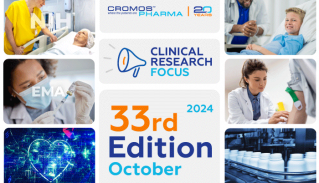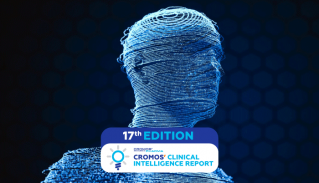
Cromos Pharma committed to patient centricity in clinical trials
Over the last few years, patient centricity has moved from buzzword to an imperative. Sponsors are now increasingly willing to offer a patient centric approach to studies. However, there remains some confusion over what this means and how to implement it. In this article Cromos Pharma looks at some of the strategies that can be employed to promote patient centricity.
What is patient centricity?
The roots of patient centric clinical research come from the patient advocacy movement. For several years, individual patients and representative groups have argued for greater consideration and protection of patients in the drug development process. Put simply patient centricity means putting the patient at the heart of clinical research from outset to endpoint. This means patient involvement in study design, including patient perspectives on location, monitoring and evaluation. It means creating opportunities for meaningful engagement throughout the clinical trial process for patients and reducing the burden on patients and their caregivers.
What are the benefits?
The benefits of adopting a patient centric approach are numerous and varied. For the patient it creates as sense of ownership and involvement in clinical research rather than being a “guinea pig”[i]. It may also reduce the burden on patient participants in terms of travel and time. For the sponsor adopting a patient centric approach can help increase patient recruitment and retention and improve data quality. Meaningful engagement with patient groups can also promote greater diversity in studies attracting hard to reach patient populations[ii].
How to take a patient centric approach
A 2020 report by Deloitte identified four pillars that should form the foundation for patient centric clinical research:
- Identify concrete objectives around incorporating the patient perspective into different processes throughout the life cycle and operationalize them.
- Track progress toward delivering key performance indicators (KPIs) and return on investment (ROI).
- Harness digital and data analytics opportunities to engage the patient and collect data on patient outcomes as well as their unmet needs.
- Form deeper collaborations within the industry, with advocacy groups, and clinicians[iii].
Bringing clinical trials to patients
The COVID-19 pandemic resulted in an acceleration of the trend towards decentralized clinical trials and remote monitoring as patients were unable to travel to study sites. Undoubtedly, leveraging digital technologies is a vital part of delivering on the promise of patient centricity. These tools allow us to bring the clinical trial directly to the patient and play an important part in reducing the burden of participation. Digital technologies can also be used to improve the patient experience in other ways for example simplifying and making the informed consent process better.
Cromos Pharma and patient centricity
For Cromos Pharma, patients have always been at the centre of what we do and how we do it. We understand the important role the clinical research organization (CRO) plays in promoting patent centricity in clinical trials. As an international CRO, patient centric clinical research involves creating meaningful engagement with patients throughout the entire trial from design to execution.
We aim to understand what the patient wants before, during and after the trial. We can address key challenges around patient recruitment by putting forward methods to identify, engage and support patients. By understanding our patients, we can assess how best to reduce the burden of participation e.g., how many site visits are preferrable, how far are patients willing to travel and what do they expect from their experience. We can identify patient-specific concerns that have an impact on recruitment, compliance, and retention. Here are some of the key elements we use to inform our approach:
- Patient centricity at the heart of all we do: From CEO to junior CRA we know that patients are the most important part of our work.
- Understanding the individual patient’s experience: From the number of hospital visits to number of blood draws, understanding how each part of the clinical trial process affects each patient is key to designing a better patient experience.
- Using technology to improve the trial experience: Being patient-centric means evolving processes alongside technological developments. This means upskilling staff, adapting to new ways of working and implementing technologies to increase engagement with patients.
- Providing clear information to patients: Clear communication is central to improving the trial experience. This means looking at documentation to ensure it presents information in an accessible manner. It also means moving towards multimedia content and forms of eConsent.
Patient centricity is here to stay, and Cromos Pharma is committed to continuing to develop ways to improve the patient experience in clinical trials. Email us at bd@cromospharma.com today to find our how we can support your next clinical project.
References:
[i] https://innovations.bmj.com/content/3/2/76
[ii] https://www.ncbi.nlm.nih.gov/pmc/articles/PMC4504054/
[iii] https://www2.deloitte.com/us/en/insights/industry/life-sciences/patient-centricity.html






























